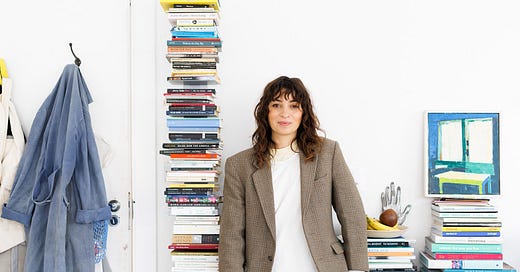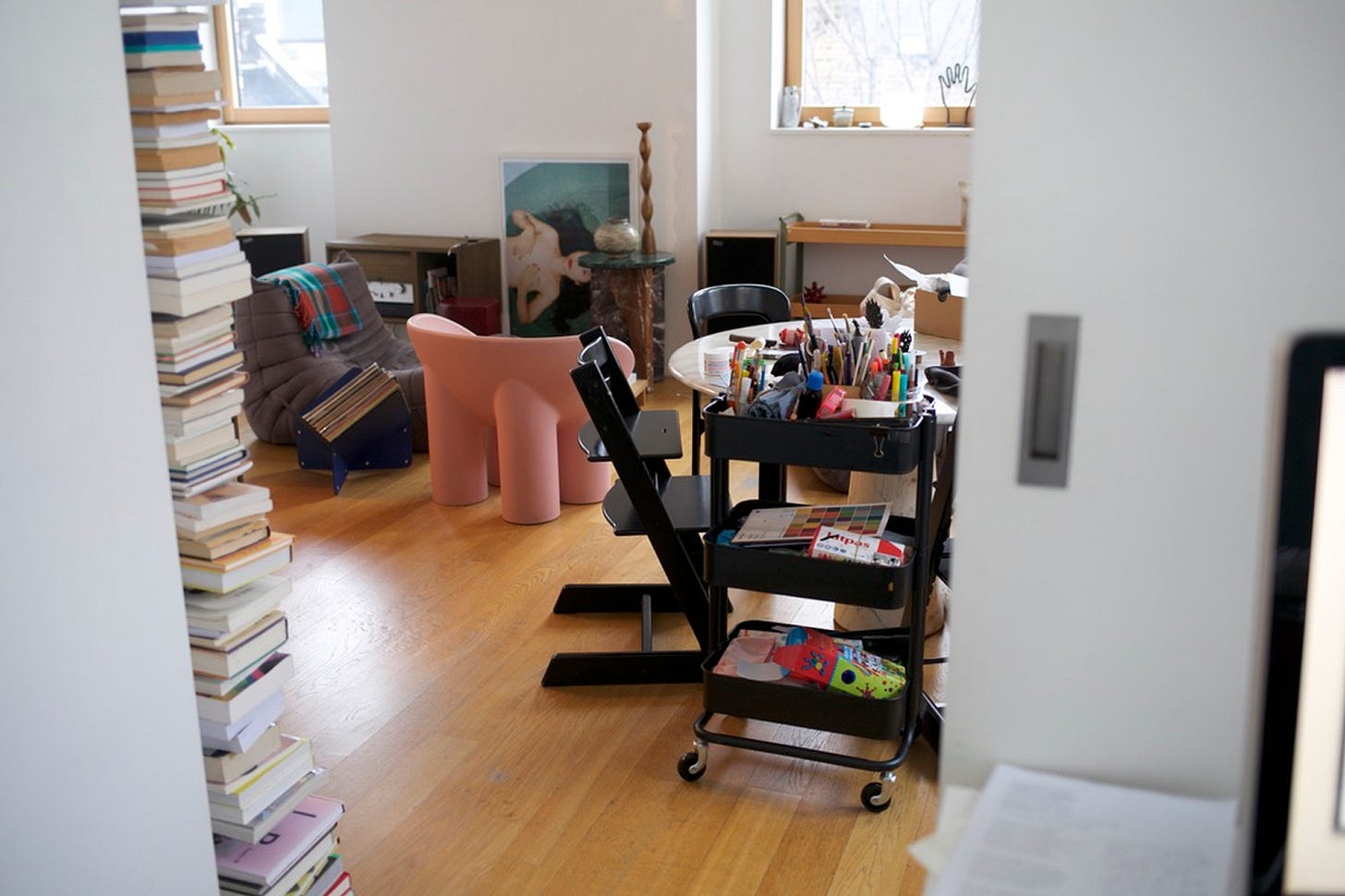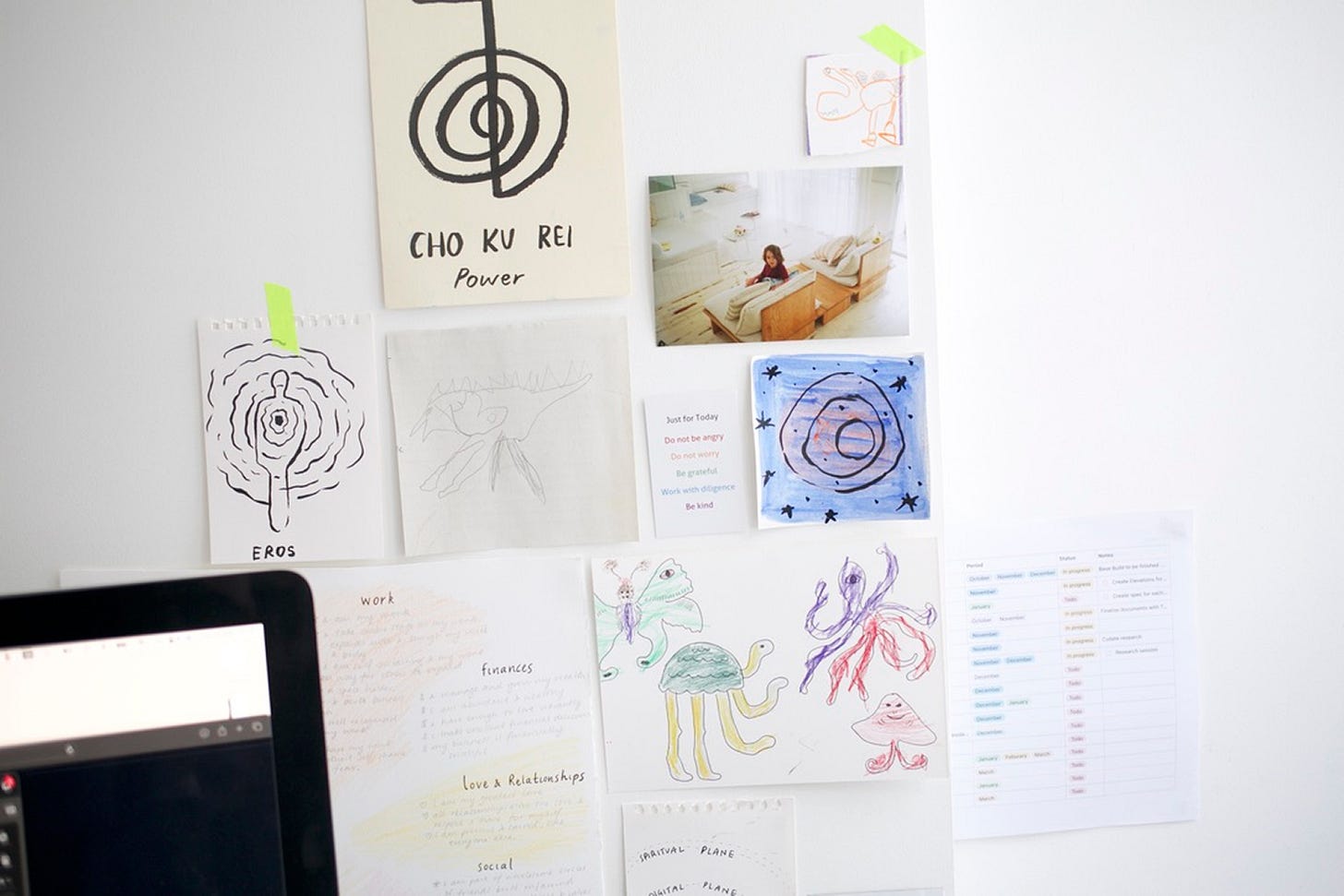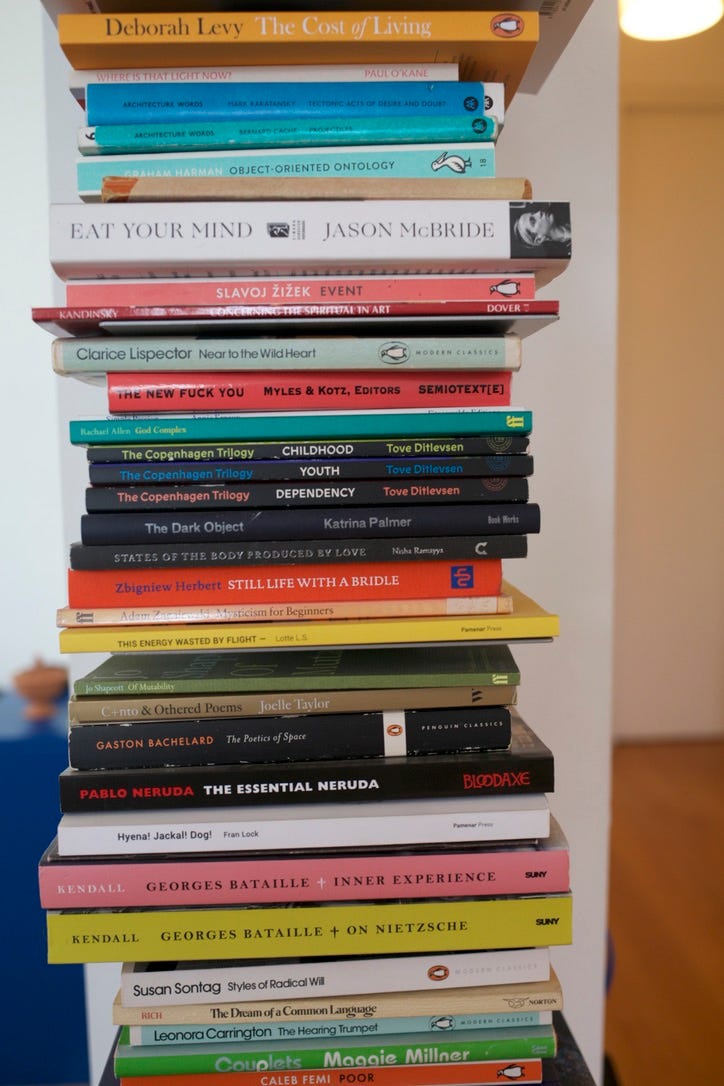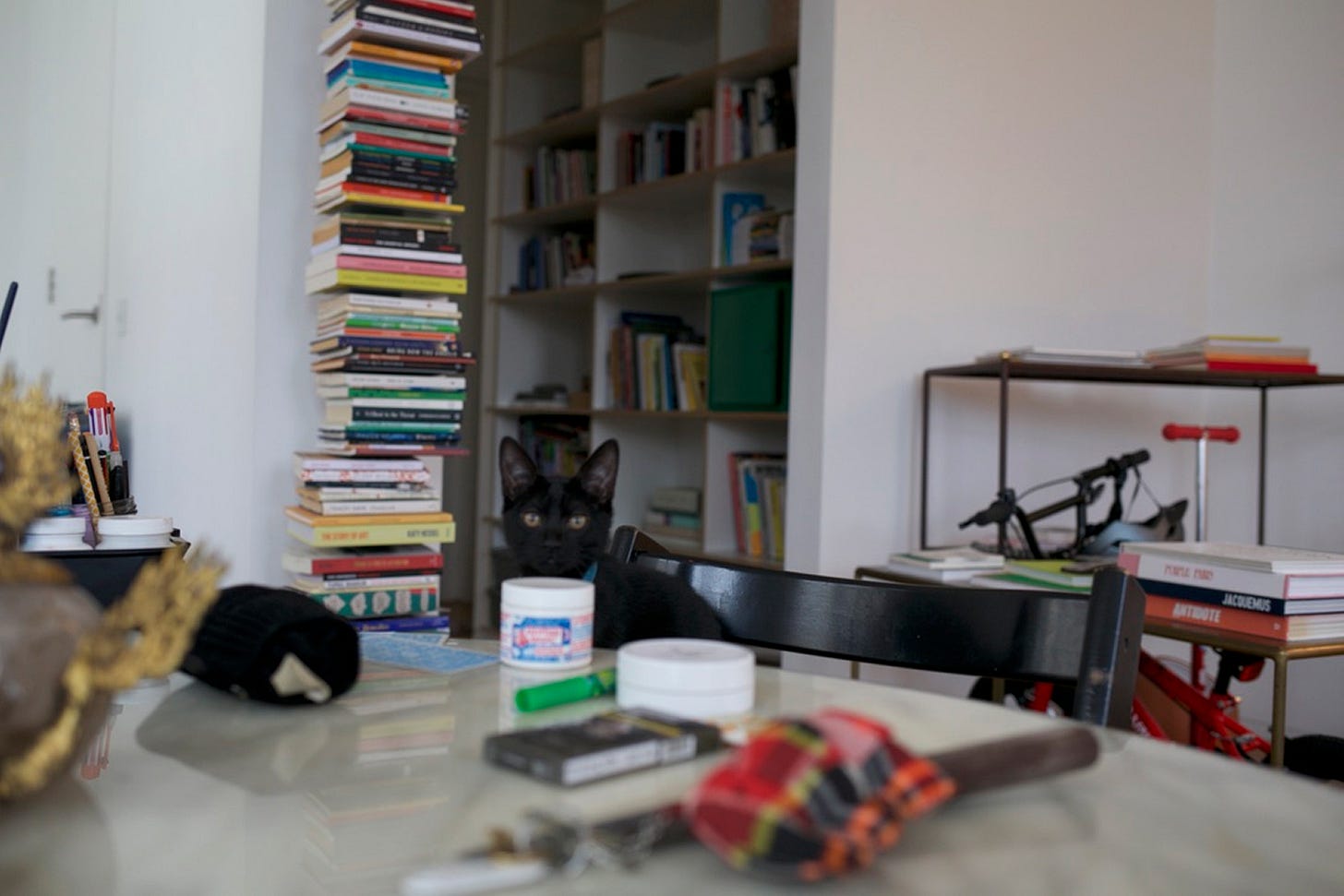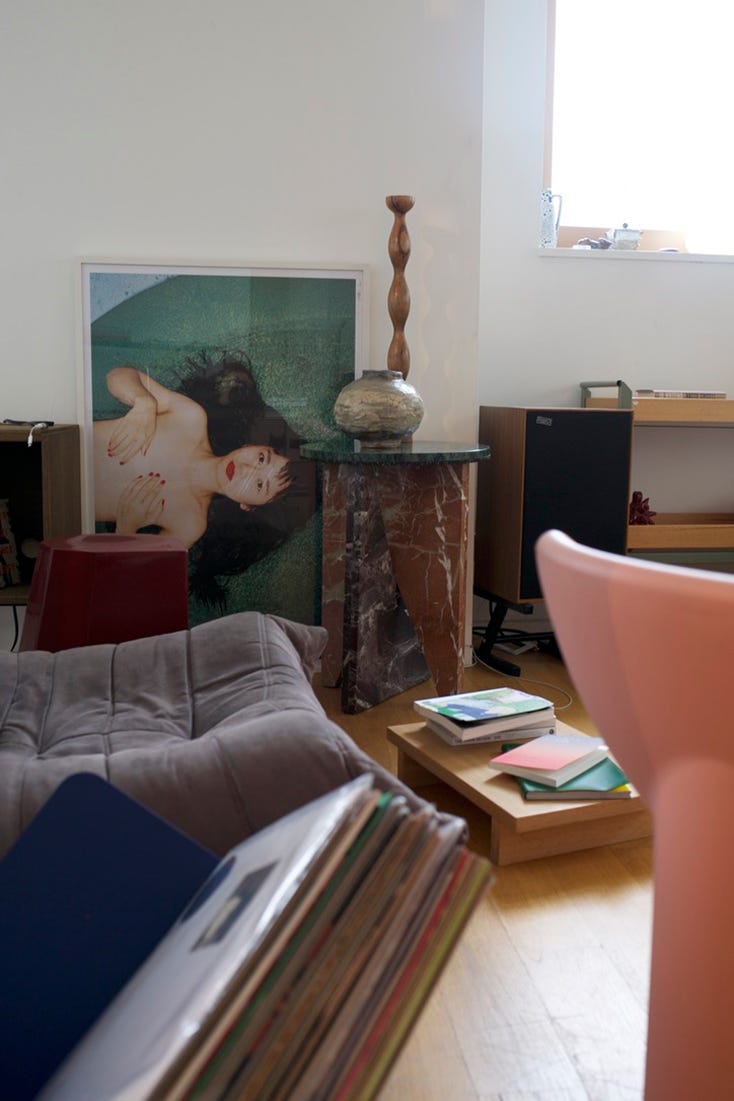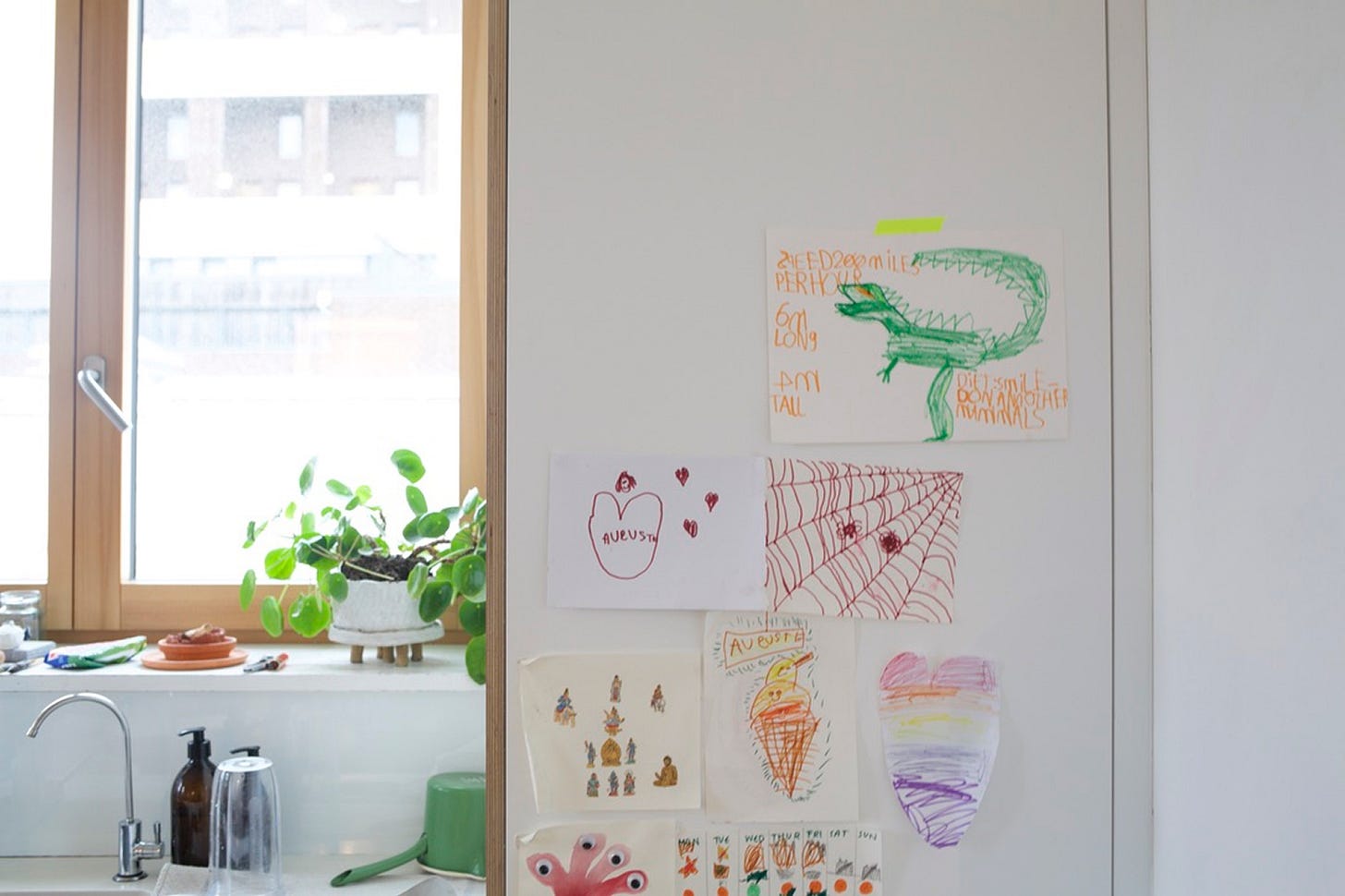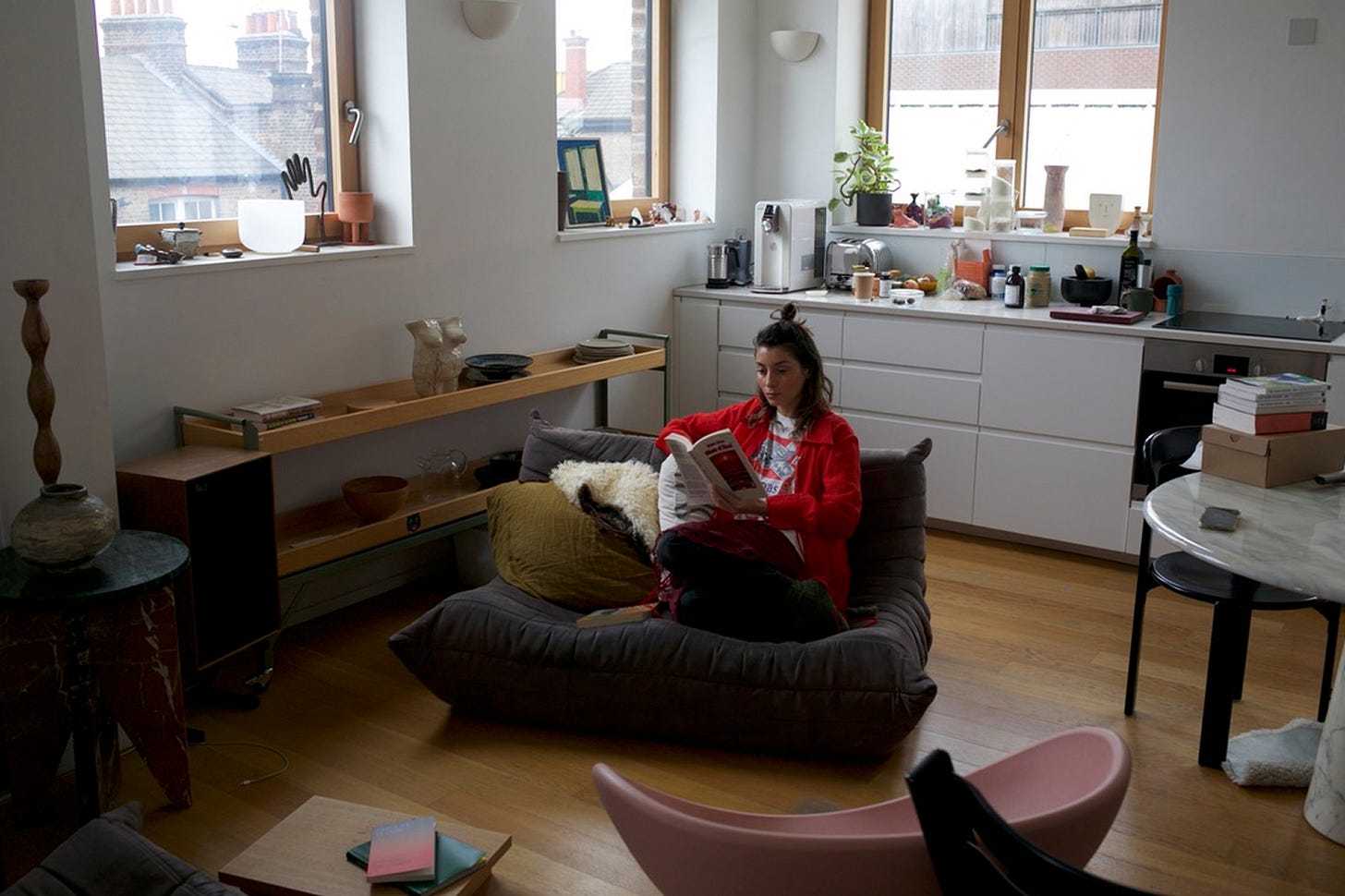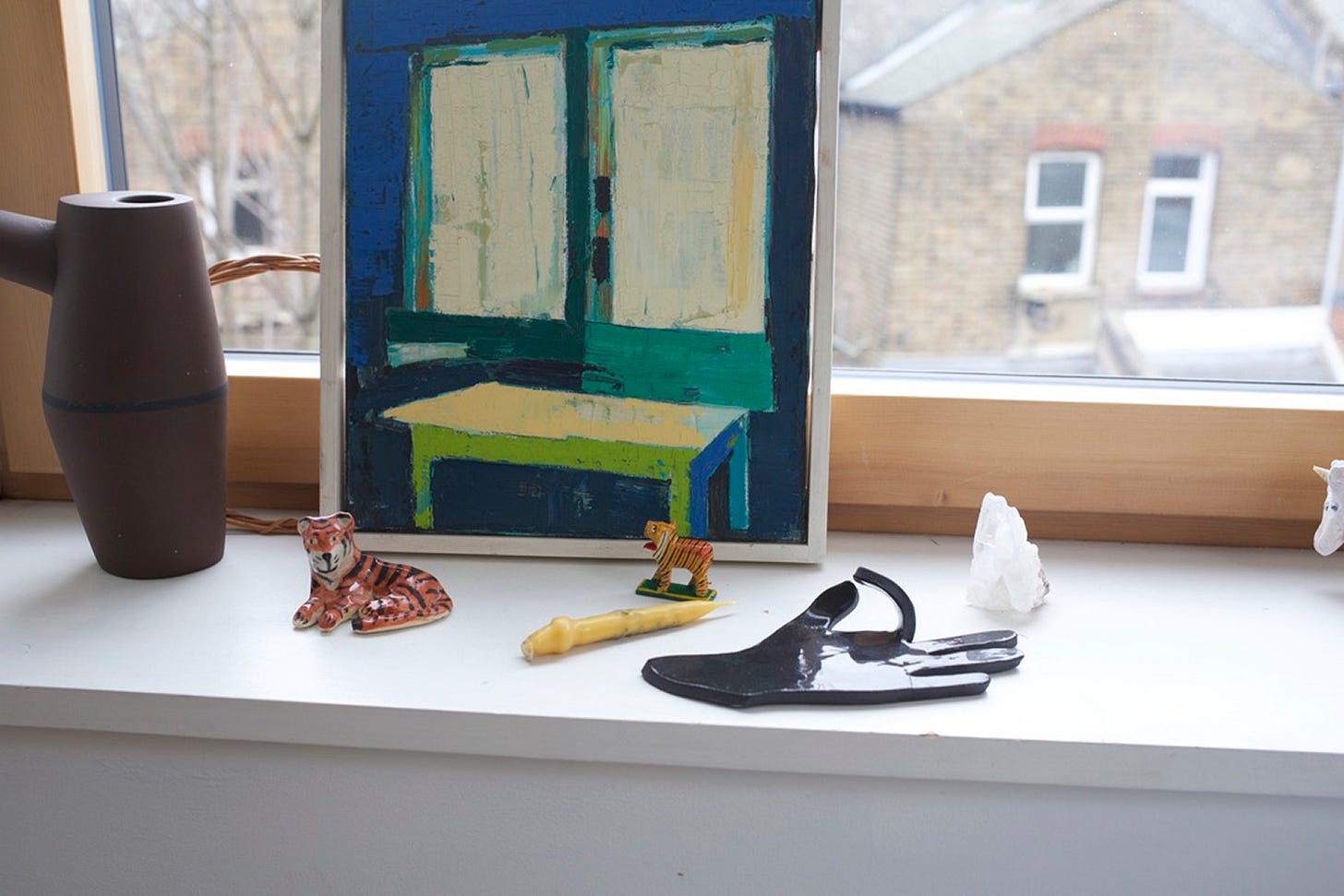An interview with artist and poet Bianca Pina
On ways of thinking, life as a poet, art by women, and more
Creativity is rarely about quantifiable results and more often about the transformation that happens when discipline, curiosity and skill come together to generate something entirely new. That’s one of the reasons I find it so fascinating to learn about the thinking processes, habits, and rituals of the creatives I admire—whether directly related to their work or not.
Starting this series of interviews has given me the chance to do just that—to ask questions about daily routines, everyday moments, current obsessions, reading habits, and all the little and big things that shape a creative life.
Each and every answer has been insightful, entertaining, or inspiring in ways that have led me to explore topics I might not have come across otherwise. Including this week’s interview with my dear friend, Bianca Pina.
Bianca is a multi-disciplinary artist, poet, and designer whose work encompasses different mediums including language, ink, clay, pixels, photography and illustration.
Bianca and I first met in Sydney in 2017, and not long after, we both moved to London where today we’re lucky to call each other neighbours. Creative routines, and ruts, naturally weave their way into most of our conversations, which often unfold over a cup of tea. Our encounters always feel like a safe space, one where we can share half-formed ideas and abstract concepts with vulnerability.
Even as we explore different areas of research, our paths seem to intersect in ways that create space for shared understanding and growth. So while our personal work may focus on different themes, our approaches to the non-linear, seasonal cycles of creation have more in common than not.
I find Bianca’s dedication to uncovering the essence of both personal and creative enquiries through her work truly inspiring, and I hope you’ll feel the same way while reading this interview.
If you feel drawn to Bianca’s work, you’ll find resources at the end of this post on how to join her latest project, the Moon Writers Club—an online circle for writers and poets that meets monthly to tap into the creative potential of each moon phase.
Enjoy the interview!
Whenever we talk, our conversations leap across a thousand different subjects. So, I’m curious—what’s been occupying your mind lately? Any ideas or obsessions you just can’t stop thinking about?
Thank ADHD for those lateral leaps of logic!
Right now, I’m circling a few ideas that might become essays. One is about anatomical ways of knowing and seeing, prompted by a late-night text from my friend Turku, who was breastfeeding at 2 a.m. She mentioned how cultural dualism might stem from the brain’s split hemispheres. That led me to think about how the design of different organs could reflect their "logos"—their unique ways of knowing.
At a silent retreat recently, I felt like I could see from my gut, & it was so different, which made me wonder what forms of knowledge exist beyond our typical understanding of thinking. How might our sense of self shift if we identified with these other ways of knowing, as opposed to identifying with thinking?
This thinking has been deeply informed by Hospicing Modernity by Vanessa Machado de Oliveira, which explores modern biases toward logic and how those biases alienate other ways of being. I want to explore what this means in practice—working with our hands feels like an important part of this integration. I’m not interested in discarding the mind entirely, but in creating new lenses through which the mind can liberate itself—eat itself, like an ouroboros.
Where are you today in your journey as a poet?
I’m proud to have committed to calling myself a poet, but I don’t use a capital P, as it is just one of many roles I play. For a long time, I felt unsure about my core practice because I’ve explored so many disciplines. My design work, for example, was something I built structure around and received a lot of external validation for. But realising that writing is something I simply can’t live without—and pursuing an MA—was a pivotal moment for me.
I’ve always been concerned with the poetic. When I engage in places, people or practices that aren’t rooted in poetics, I feel a deep discomfort. Now, I’m learning how to live as a poet without compromise. It’s an exciting time to be a poet—but even if it wasn’t, I’d still be writing poems.
Could you name some of the artists who have had the greatest influence on you, both personally and creatively?
More and more, I find myself drawn exclusively to the work of women. Perhaps that’s always been true, but now I’m intentional about it. I have limited attention, and I want to use it to hear the voices of women—especially those who’ve shaped creative lineages I hope to belong to.
In visual art: Georgia O’Keeffe, Agnes Martin (especially her writing), Hilma af Klint, Roni Horn, and contemporary artists like Saelia Aparicio. I’m deeply drawn to work that explores the body—Louise Bourgeois’s pieces with camisole and bones come to mind. Marina Abramović also feels like a kind of patron saint.
In literature: Virginia Woolf, Eileen Myles, Anne Carson, Kim Addonizo, Dianne Seuss, Tove Dittlevsen —they’ve all given me permission slips in one way or another. Ella Frears, who taught me for a while, opened up my writing practice and introduced me to Fran Lock, whose ferocity has driven my writing. Clarice Lispector’s writing feels like home—it’s where I see my existential-child-self reflected most and I return to her books for nourishment and reassurance.
I also love thinkers like Susan Sontag, Simone Weil, Audre Lorde, Melissa Febos and Hélène Cixous.
It always stings a little when I encounter an artist making work I wish I’d made—not just because I think it’s brilliant, but because it articulates something I feel deeply & didn’t express.
Are there themes or motifs you find yourself returning to in your work?
I’m constantly haunted by childhood—in all its gore and glory. I think I might still be stuck inside my childhood, for better or worse. Writing about it allows me to disguise my very real belief that life is magical. It’s something we know instinctively as children but lose touch with as we grow older. I want to uphold that illusion—or, as I see it, the imagination—which feels like my innermost freedom.
My meditation practice, particularly loosening my sense of self, has liberated my writing about childhood. It doesn’t always have to be me or mine.
In essays, I explore more adult themes—female anatomy, social structures, and the erotic. Across both poetry and prose, I’m always trying to validate non-linear ways of thinking and being. We’re living in the aftermath of linear, logical failures, and I’m interested in what comes next, or perhaps the re emergence of what came before.
What’s a poem or piece of art you’ve created or project you’ve participated in that you’re especially proud of? Why?
It would have to be the 40-poem collection I submitted for my MA. Not many people have seen it, and it’s probably not my best work, but it was deeply personal and close to the bone. Writing it was like doing ten years of therapy in one year. It pushed me to grow both as a person and a poet.
If you could spend a month creating anything anywhere in the world, where would it be and why?
I’d want a large, light-filled space in a warm climate. I’d spend my days oscillating between writing and making things with my hands—maybe painting, or assembling found objects.
I’d want to be somewhere with visible remnants of human chaos—a beach littered with plastic and washed-up ropes, I want to make work rooted in today’s environments & predicaments. I’d wander the shoreline, collecting bits of scrap, and bring them back to my studio to tinker with while mentally weaving together phrases.
There would be a dog in the studio—not mine, just one that likes to hang out on a beat-up couch. I’d take an afternoon swim & nap, then write in the evenings. My son would be there, too, and we’d have one of those perfect days where we both tinker quietly, holding open a beautiful shared silence.
The specific location doesn’t matter— maybe in the Med, somewhere with good snacks.
Since we both love talking about food, let’s step into the kitchen for a moment. What are the essential ingredients you always keep stocked? And is there a go-to dish you find yourself cooking over and over again?
My blood is Mediterranean, so anything that grows wild there feels close to my soul—Fennel for example in all of its forms (bulb, tops, seeds). I love simple, wholesome, peasant food—from any region. Whenever I cook I try to layer a few textures, something soft, crunchy etc. my mouth likes that.
I also try to cook dishes my son will enjoy, like chicken soup. I often have it simmering on the stove when he gets home after being away—a sensory welcome home.
How do you recharge and find inspiration when you’re feeling creatively drained? Any habits or rituals that help sustain your artistic practice?
The biggest threat to my creative well is overcommitting to work, or the illusion and stress of business. Poetry feels like something alive inside me that needs daily nourishment, but I often fall out of the habit.
Picking up a book of poetry is my quickest way back in. A poem is a small commitment, so I tell myself, I’ll just read one. That usually bypasses my resistance to feeling better (why do we resist that?). And, inevitably, I read more—and something sparks the urge to write.
What’s the last book you couldn’t put down, and why? Any exhibitions, plays, or movies you’ve enjoyed recently?
I usually have several books in rotation. Autobiography of Red by Anne Carson was a lifeline when I read it last year—I was actually scared to finish it. Adam by Gboyega Odubanjo is incredible. I read it all at once, then immediately started again from page one. I also recently reread Camus’s The Myth of Sisyphus. It’s so much richer on the second or third read—once you grasp the concepts, you can better appreciate his writing.
I enjoyed the film La Chimera recently which got me on a Alice Rohrwacher tangent.
And finally, is there a medium or skill you haven’t explored yet but would love to try?
Agh so many. I’m excited to get back into a studio this year and get a physical making practice going again. I’d like to work with wood, natural pigments & beeswax to name a few. I need to grow more arms.
Thank you for reading. All photos are courtesy of Bianca Pina.
You can learn more about Bianca’s work here and about the upcoming Moon Writers Club here.
xx Stefania

